Reconstitution of a telomeric replicon organized by CST
- PMID: 35831508
- PMCID: PMC9402439
- DOI: 10.1038/s41586-022-04930-8
Reconstitution of a telomeric replicon organized by CST
Abstract
Telomeres, the natural ends of linear chromosomes, comprise repeat-sequence DNA and associated proteins1. Replication of telomeres allows continued proliferation of human stem cells and immortality of cancer cells2. This replication requires telomerase3 extension of the single-stranded DNA (ssDNA) of the telomeric G-strand ((TTAGGG)n); the synthesis of the complementary C-strand ((CCCTAA)n) is much less well characterized. The CST (CTC1-STN1-TEN1) protein complex, a DNA polymerase α-primase accessory factor4,5, is known to be required for telomere replication in vivo6-9, and the molecular analysis presented here reveals key features of its mechanism. We find that human CST uses its ssDNA-binding activity to specify the origins for telomeric C-strand synthesis by bound Polα-primase. CST-organized DNA polymerization can copy a telomeric DNA template that folds into G-quadruplex structures, but the challenges presented by this template probably contribute to telomere replication problems observed in vivo. Combining telomerase, a short telomeric ssDNA primer and CST-Polα-primase gives complete telomeric DNA replication, resulting in the same sort of ssDNA 3' overhang found naturally on human telomeres. We conclude that the CST complex not only terminates telomerase extension10,11 and recruits Polα-primase to telomeric ssDNA4,12,13 but also orchestrates C-strand synthesis. Because replication of the telomere has features distinct from replication of the rest of the genome, targeting telomere-replication components including CST holds promise for cancer therapeutics.
© 2022. The Author(s).
Conflict of interest statement
T.R.C. is a scientific advisor for Storm Therapeutics and Eikon Therapeutics. The other authors declare no competing interests.
Figures
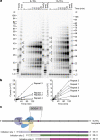
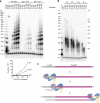
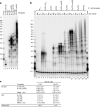

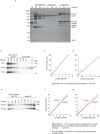
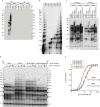
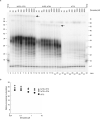
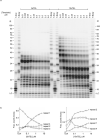
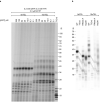
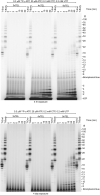

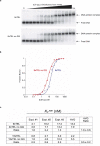
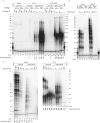
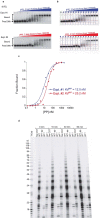
Similar articles
-
CST-Polα/Primase: the second telomere maintenance machine.Genes Dev. 2023 Jul 1;37(13-14):555-569. doi: 10.1101/gad.350479.123. Epub 2023 Jul 26. Genes Dev. 2023. PMID: 37495394 Free PMC article. Review.
-
POT1 recruits and regulates CST-Polα/primase at human telomeres.Cell. 2024 Jul 11;187(14):3638-3651.e18. doi: 10.1016/j.cell.2024.05.002. Epub 2024 Jun 4. Cell. 2024. PMID: 38838667 Free PMC article.
-
CST-polymerase α-primase solves a second telomere end-replication problem.Nature. 2024 Mar;627(8004):664-670. doi: 10.1038/s41586-024-07137-1. Epub 2024 Feb 28. Nature. 2024. PMID: 38418884 Free PMC article.
-
Models for human telomere C-strand fill-in by CST-Polα-primase.Trends Biochem Sci. 2023 Oct;48(10):860-872. doi: 10.1016/j.tibs.2023.07.008. Epub 2023 Aug 15. Trends Biochem Sci. 2023. PMID: 37586999 Free PMC article. Review.
-
POT1 recruits and regulates CST-Polα/Primase at human telomeres.bioRxiv [Preprint]. 2023 Oct 26:2023.05.08.539880. doi: 10.1101/2023.05.08.539880. bioRxiv. 2023. Update in: Cell. 2024 Jul 11;187(14):3638-3651.e18. doi: 10.1016/j.cell.2024.05.002. PMID: 37215005 Free PMC article. Updated. Preprint.
Cited by
-
CST-Polα/Primase: the second telomere maintenance machine.Genes Dev. 2023 Jul 1;37(13-14):555-569. doi: 10.1101/gad.350479.123. Epub 2023 Jul 26. Genes Dev. 2023. PMID: 37495394 Free PMC article. Review.
-
Structures of the human CST-Polα-primase complex bound to telomere templates.Nature. 2022 Aug;608(7924):826-832. doi: 10.1038/s41586-022-05040-1. Epub 2022 Jul 13. Nature. 2022. PMID: 35830881 Free PMC article.
-
DNA polymerase α/primase extraction from chromatin by VCP/p97 restricts ATR activation during unperturbed DNA replication.Nat Commun. 2025 Jul 1;16(1):5706. doi: 10.1038/s41467-025-60077-w. Nat Commun. 2025. PMID: 40593507 Free PMC article.
-
The yeast CST and Polα/primase complexes act in concert to ensure proper telomere maintenance and protection.Nucleic Acids Res. 2025 Apr 10;53(7):gkaf245. doi: 10.1093/nar/gkaf245. Nucleic Acids Res. 2025. PMID: 40245101 Free PMC article.
-
Telomere maintenance in African trypanosomes.Front Mol Biosci. 2023 Nov 24;10:1302557. doi: 10.3389/fmolb.2023.1302557. eCollection 2023. Front Mol Biosci. 2023. PMID: 38074093 Free PMC article. Review.
References
-
- Kim NW, et al. Specific association of human telomerase activity with immortal cells and cancer. Science. 1994;266:2011–2015. - PubMed
-
- Greider CW, Blackburn EH. Identification of a specific telomere terminal transferase activity in Tetrahymena extracts. Cell. 1985;43:405–413. - PubMed
-
- Goulian M, Heard CJ. The mechanism of action of an accessory protein for DNA polymerase α/primase. J. Biol. Chem. 1990;265:13231–13239. - PubMed
MeSH terms
Substances
Grants and funding
LinkOut - more resources
Full Text Sources
Molecular Biology Databases

